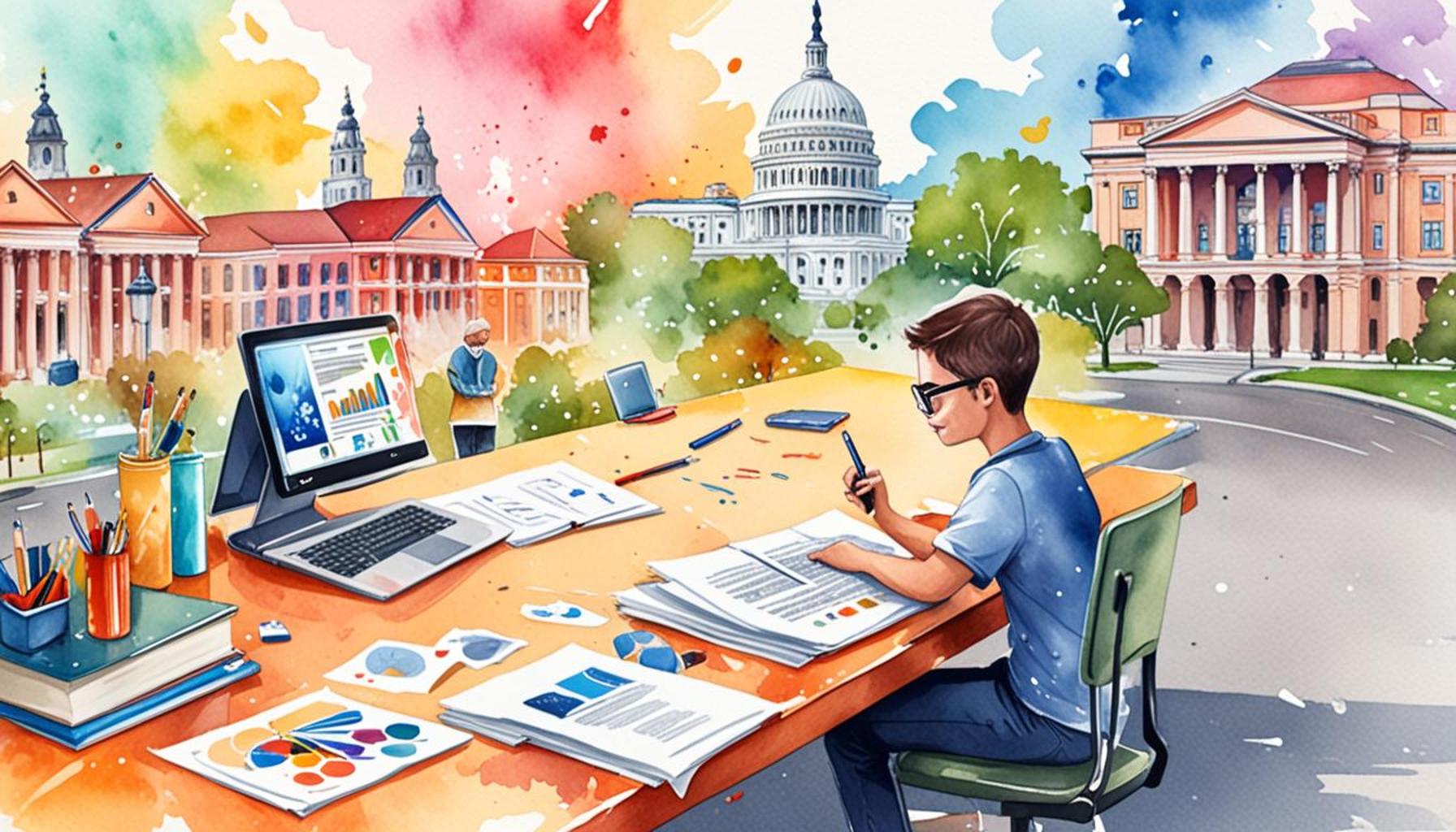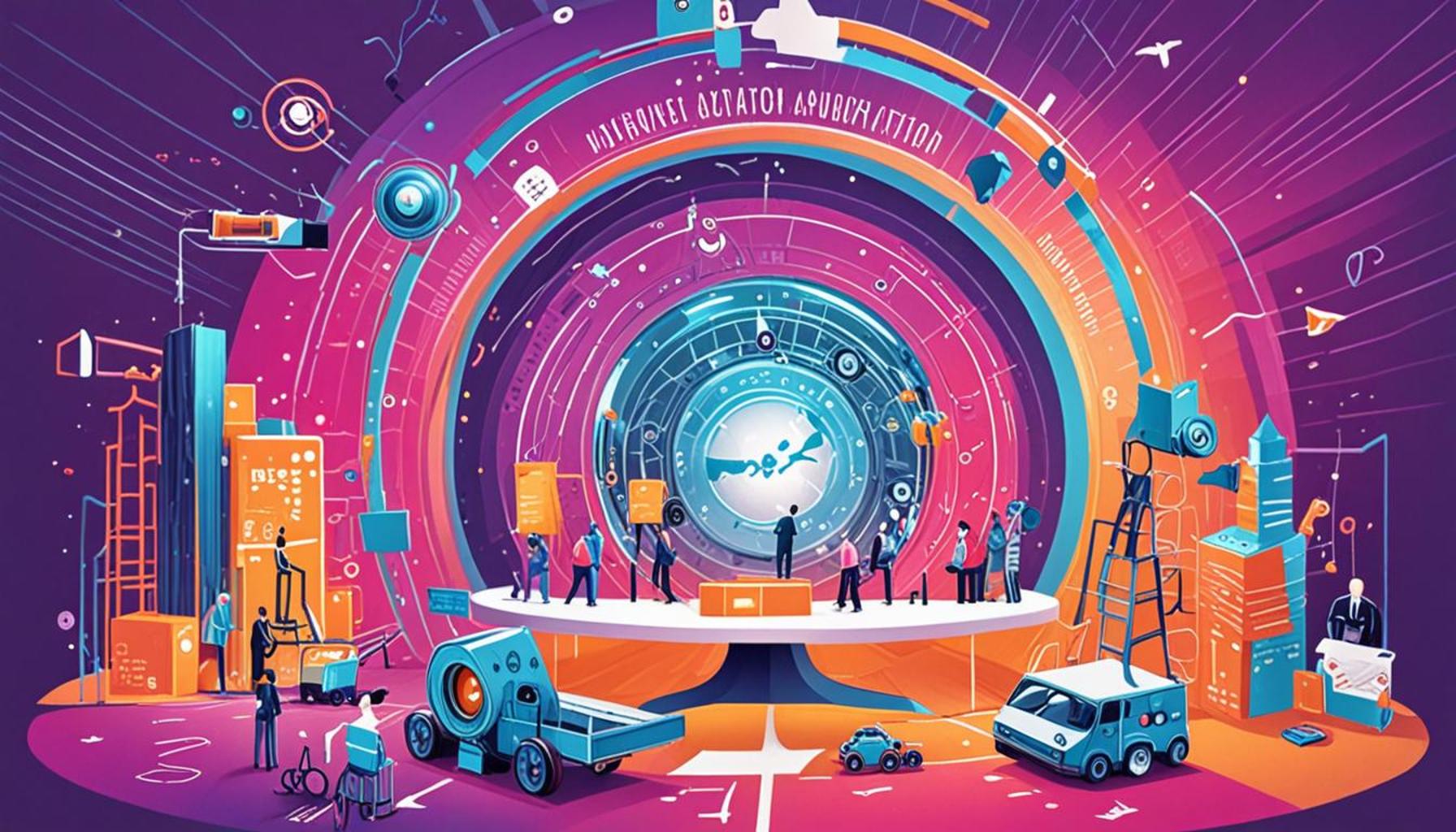The Role of Marketing Automation in Education and Awareness of Government Benefits

Introduction to Marketing Automation in Government Programs
As technology continues to evolve, the relationship between marketing automation and the distribution of government benefits has grown increasingly pivotal. This dynamic enables government entities to bridge the information gap that often exists between services offered and the citizens who may benefit from them. By leveraging modern communication tools, governments can ensure that essential information reaches the public effectively and efficiently, ultimately empowering citizens to take advantage of available support programs.
Benefits of Marketing Automation in Government Outreach
There are numerous advantages to implementing marketing automation strategies in the realm of government benefits. Below are some of the key benefits:
- Personalized Outreach: With marketing automation, agencies can craft tailored messages aimed at specific demographics. For instance, programs like SNAP (Supplemental Nutrition Assistance Program) can utilize targeted email campaigns to engage low-income families or seniors who may be unaware of eligibility criteria. This tailored approach not only boosts engagement but also enhances participation rates among underrepresented groups.
- Real-time Updates: Automated communications can seamlessly provide real-time updates about program changes, new benefits, or impending deadlines. For example, during the COVID-19 pandemic, governments around the country used automated notifications to keep citizens informed about relief efforts, including stimulus checks and unemployment benefits, thus ensuring timely access to critical support.
- Enhanced Analytics: Utilizing sophisticated analytics tools allows agencies to track how citizens interact with informational content. By measuring engagement metrics such as open rates on emails or the number of clicks on shared links, governments can refine their outreach strategies, determining which messages resonate best with their audiences.
The Importance of Trust and Transparency
The integration of marketing automation also plays a vital role in building trust and transparency between government agencies and citizens. Providing accessible, relevant content directly related to individual needs fosters stronger relationships. For instance, local governments can use targeted social media ads to alert residents about housing assistance or tax credits, providing clear instructions on how to apply. As citizens become more informed about these resources, they are more inclined to engage with the programs available to them.
In summary, the use of marketing automation in disseminating information about government benefits represents a transformative shift in public communications. By embracing these technologies, governmental bodies can significantly enhance citizen engagement and ensure that programs designed to aid the public are effectively utilized. As we continue to explore how marketing automation can reshape government communications, it becomes clear that the potential for positive impact is vast, and the future holds exciting possibilities.
SEE ALSO: Click here to read another article
Maximizing Engagement Through Targeted Communication
As government initiatives strive to reach a broader audience, the role of marketing automation becomes crucial in maximizing engagement and participation in various programs. This technology not only streamlines communication processes but also enhances the effectiveness of outreach efforts aimed at educating citizens about government benefits. By automating the delivery of information, agencies can ensure that citizens receive timely and relevant content tailored to their specific circumstances.
One of the most significant ways marketing automation impacts education about government benefits is by facilitating data-driven strategies. Government agencies often possess a wealth of data regarding demographics, usage patterns, and individual needs, but without effective analysis, this information remains untapped. Automation tools enable organizations to segment their audiences based on various factors such as age, income level, or geographic location. For instance, a focus on specific communities can lead to dedicated outreach efforts that inform citizens about local housing programs, educational grants, or health services. This level of segmentation ensures that the right messages reach the right people.
Innovative Campaigns and Multi-Channel Approaches
Moreover, marketing automation allows governments to implement innovative campaigns across multiple channels, which is essential in a landscape where citizens consume information differently. Citizens may prefer receiving updates via text, email, or social media platforms. An integrated approach—utilizing channels such as emails, social media posts, and even SMS alerts—ensures comprehensive coverage and boosts the likelihood of engagement.
- Email Campaigns: Governments can send personalized emails highlighting new benefits or programs, including important deadlines. For example, an email blast can notify eligible families about childcare subsidies, equipped with straightforward instructions on the application process.
- Social Media Engagement: Using platforms like Facebook or Twitter can be particularly effective in engaging younger demographics, providing bite-sized information and directing users to where they can find more extensive details.
- SMS Notifications: Automated text messaging can prove lifesaving for timely updates, such as reminders about upcoming enrollment deadlines for healthcare programs.
This strategic use of multiple communication channels not only broadens outreach but also makes education about government benefits more accessible to diverse populations. As citizens come to expect real-time updates and personalized content, marketing automation stands as a foundational tool in shaping how governments communicate. This evolving landscape fosters an environment where citizens are not just passive recipients of information but active participants in their understanding and utilization of available resources.
However, it is essential to consider that while marketing automation can significantly enhance awareness and education, successful implementation requires careful planning and evaluation of results. By harnessing analytics, agencies can continually refine their approaches, ensuring that messages remain relevant and impactful in informing citizens about the benefits available to them.
| Category | Advantages |
|---|---|
| Increased Engagement | Marketing automation tools allow educational institutions to customize communications, leading to higher levels of engagement with potential beneficiaries. |
| Improved Reach | Through targeted marketing campaigns, schools can effectively disseminate information about government benefits, ensuring that those who need it most are informed. |
Utilizing marketing automation not only streamlines the educational process but significantly enhances awareness about government benefits. By leveraging data analytics, educational institutions can identify audience segments and deliver tailored messages. This allows for a personalized approach that resonates with individuals, promoting deeper understanding and engagement. Furthermore, automated workflows enable timely updates and reminders regarding government benefits, ensuring stakeholders are consistently informed. The impact of marketing automation extends beyond mere communication; it fosters a more educated populace who can fully utilize available resources. As the landscape of government assistance evolves, the importance of staying informed cannot be overstated—digital tools are paving the way for a future where information is readily accessible and comprehensible. In this rapidly changing environment, staying ahead is paramount, urging institutions to adopt innovative solutions to reach and educate the public effectively.
LEARN MORE: This related article may interest you
Enhancing User Experience Through Personalized Interactions
Another compelling advantage of marketing automation in the realm of government benefits is the ability to create personalized user experiences that significantly enhance citizen engagement. In the digital age, individuals are increasingly accustomed to personalized content recommendations and communications, which is why it is essential for government agencies to adopt similar strategies. By utilizing automation, governments can craft tailored messages that resonate with specific demographic groups, thereby fostering a more meaningful connection between the agency and the citizens it serves.
This level of personalization can be achieved through sophisticated customer relationship management (CRM) systems integrated with marketing automation tools. For instance, by capturing details such as a citizen’s age, income, or previous interactions with government programs, agencies can provide customized information. According to a 2022 survey conducted by the Pew Research Center, approximately 70% of citizens expressed a preference for receiving services tailored to their personal situations. Marketing automation allows governments to respond to this demand effectively.
Empowering Citizens with Interactive Resources
Moreover, marketing automation can empower citizens by offering interactive resources that simplify the exploration of government benefits. Interactive tools such as eligibility quizzes, budget calculators, and online chatbots can guide users through the often convoluted application processes for various programs. For instance, a chatbot on a state government’s website can provide immediate answers to FAQs about unemployment benefits, directing users to appropriate resources while simultaneously collecting data to improve future outreach efforts.
Furthermore, governments can utilize local events and webinars to engage their communities more actively. By employing automation to manage event registration, reminders, and follow-ups, agencies can ensure higher turnout rates at such educational sessions. For example, local housing authorities might host webinars explaining new housing assistance programs, utilizing automated email reminders to increase attendance. The interaction not only educates but also humanizes the agency, making it relatable and approachable.
Fostering Trust Through Transparency and Follow-up
In addition, transparency is paramount in building trust with citizens regarding government benefits. Marketing automation can facilitate this by maintaining open channels of communication throughout the application and enrollment processes. Automated follow-ups after citizens apply for benefits can include confirmations, next steps, or additional resources tailored to their situations. Such engagement demonstrates that the government values user feedback and is committed to providing essential support, thereby enhancing public trust.
- Feedback Mechanisms: Implementing automated surveys post-interaction allows citizens to voice their opinions on government services, enabling agencies to adapt based on real user experiences.
- Regular Updates: Automating updates about changes in benefits or programs keeps citizens informed, ensuring they are not left in the dark about essential services available to them.
- Resource Integration: Automated systems can link citizens to various resources, such as local help centers or online information hubs, increasing accessibility and improving the overall experience.
Through these multifaceted approaches, marketing automation can significantly enhance how government benefits are communicated and understood. By fostering a culture of engagement, personalization, and transparency, government agencies are not merely dispensing information but actively building relationships that empower citizens to take full advantage of the resources available to them.
LEARN MORE: This related article may interest you
Conclusion: Embracing Automation for a Better Informed Citizenry
As we delve into the ever-evolving landscape of government outreach, it is clear that marketing automation plays a pivotal role in enhancing the education and awareness of government benefits. By employing sophisticated tools and techniques, agencies can transform how they interact with citizens, moving from a one-size-fits-all approach to a more nuanced, personalized engagement model.
The integration of automated systems not only streamlines communication but also fosters an environment where citizens feel empowered to access vital resources. Through tailored messages and interactive tools, citizens can now navigate the complexities of government programs with relative ease. Furthermore, the emphasis on transparency reassures individuals of their relevance within the governmental framework, ultimately cultivating trust and community involvement.
According to recent studies, areas with enhanced communication strategies have seen significant increases in citizen engagement, leading to higher participation rates in government programs. This insight showcases the untapped potential of marketing automation in bridging the information gap that often exists between citizens and the services designed to support them.
As we look forward, it is imperative for government agencies across the United States to embrace these automation strategies fully. By fostering a culture of constant improvement and feedback through automated systems, agencies not only enhance their services but also contribute to a more informed and engaged citizenry. For readers wishing to learn more or implement similar strategies in their communities, the journey toward effective communication and service delivery begins now.


